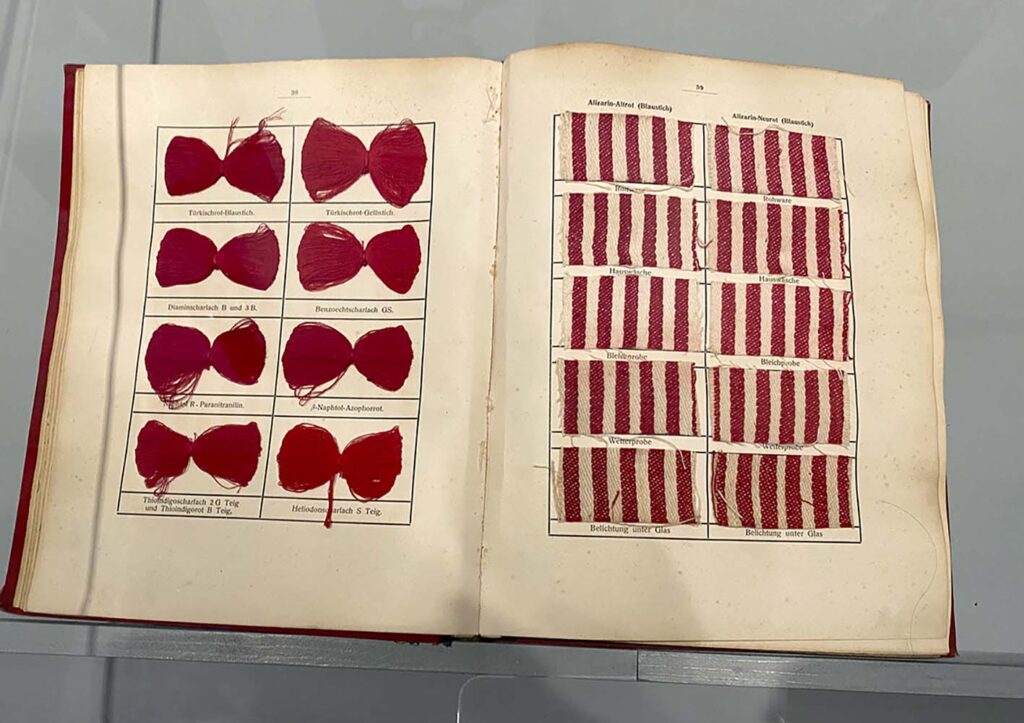
The most beautiful grids can be found in old sample books. The Textile Museum has an entire collection of these. Not only from fabrics, but also from dyed samples of wool.
In the Middle Ages, yarns and fabrics were dyed with natural dyes. This was mainly done by dyers who were organized in different guilds. For example, there was a guild for blue dyers and one for red dyers. The dyers were located on rivers and canals on the outskirts of the cities. A lot of water was used and the dyeing process was dirty and smelly. So dirty that canals in Leiden turned red or blue. The water could eventually no longer be used for the dyeing process and fresh water was supplied in tons.
Each dyer had his own recipes, which were kept in books with samples of the dyed wool. The sample books of the Tilburg dyers were transcribed in 2022 and the books were renovated. I went through the transcripts of the red recipes in search of a recipe that could be tried out in a workshop. An important criteria in the search process was that no chemicals should be present in the recipe. That turned out to be a problem. A lot of chemicals were used. Think of nitric acid, sulfuric acid, tin salt and lead sugar. Some recipes use synthetic dyes such as Poinceau and Fuchsine. I also came across many unfamiliar terms, which were dificult to trace. In the end I found two recipes with madder and campèche, one of which with a sample. That last recipe, which was quite simple, I tried several times. It contains an ingredient list with very brief instructions. The question was in what form the madder was used: grated or powdered? What I learned is that the colour was determined by the quality of the ingredients. Not only the quality of the wool, pure wool or mixed with alpaca, but also the dyes. With the campèche that I bought at Greening, the wool got in the ratio of the recipe, a dark purple colour (eggplant colour). In a lower proportion, the wool was given the colour of the sample. With the campèche that I bought at Verfmolen de Kat, the ratio from the recipe immediately turned out to yield the colour of the sample.
